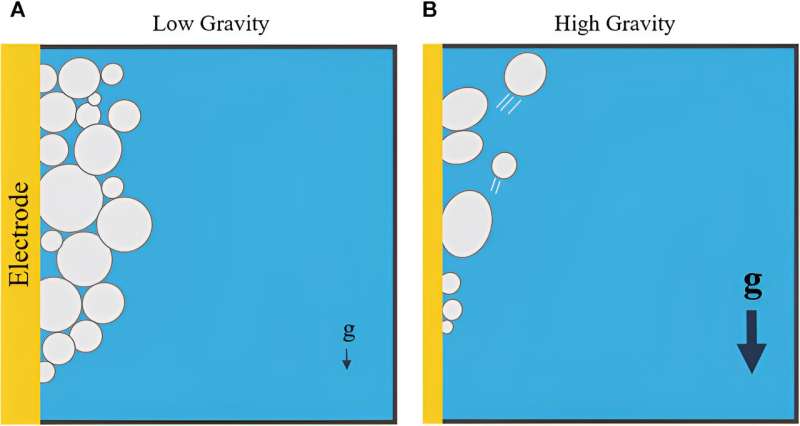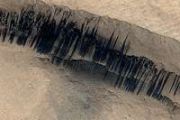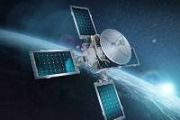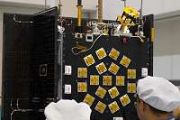
Copernical Team
Make the most of ESA’s Industry Space Days 2024

Participants of ESA’s Industry Space Days (ISD 2024) share insights and tips on how to make the most of this space technology business event on 18–19 September at ESA-ESTEC in Noordwijk, The Netherlands.
Juice’s lunar-Earth flyby: all you need to know LINK

Juice’s lunar-Earth flyby: all you need to know
ICON mission ends with critical breakthroughs on Earth, space weather
Hubble Observes Possible Galactic Collision
 The NASA/ESA Hubble Space Telescope has captured an image of the dwarf irregular galaxy NGC 5238, situated 14.5 million light-years away in the Canes Venatici constellation. This galaxy, resembling an oversized star cluster rather than a typical galaxy, is a key focus of current research due to its complex structure.
Hubble's detailed image highlights numerous stars and associated globular
The NASA/ESA Hubble Space Telescope has captured an image of the dwarf irregular galaxy NGC 5238, situated 14.5 million light-years away in the Canes Venatici constellation. This galaxy, resembling an oversized star cluster rather than a typical galaxy, is a key focus of current research due to its complex structure.
Hubble's detailed image highlights numerous stars and associated globular Rocket Lab Sets Date for 51st Electron Mission with Synspective Satellites
 Rocket Lab USA, Inc. (Nasdaq: RKLB) has announced the launch window for its 51st Electron mission, set to deploy the latest satellite for long-term customer Synspective.
The "Owl for One, One for Owl" mission will launch from Rocket Lab Launch Complex 1 in Mahia, New Zealand, during a 14-day window starting on July 31st NZST / July 30th UTC. This mission will place a single StriX satellite
Rocket Lab USA, Inc. (Nasdaq: RKLB) has announced the launch window for its 51st Electron mission, set to deploy the latest satellite for long-term customer Synspective.
The "Owl for One, One for Owl" mission will launch from Rocket Lab Launch Complex 1 in Mahia, New Zealand, during a 14-day window starting on July 31st NZST / July 30th UTC. This mission will place a single StriX satellite PariSat returns first images of Earth
 Earth's beauty has been captured by some of the youngest space operators. The PariSat experiment, part of Ariane 6's inaugural flight, was developed by young enthusiasts aged 15 to 25 from the GAREF AEROSPATIAL amateur space club.
The experiment aimed to test the Stefan-Boltzmann law of thermal radiation by identifying the most effective materials for dissipating heat in space.
Eight
Earth's beauty has been captured by some of the youngest space operators. The PariSat experiment, part of Ariane 6's inaugural flight, was developed by young enthusiasts aged 15 to 25 from the GAREF AEROSPATIAL amateur space club.
The experiment aimed to test the Stefan-Boltzmann law of thermal radiation by identifying the most effective materials for dissipating heat in space.
Eight YPSat captures Ariane 6 inaugural launch
 If there had been an astronaut aboard the historic first launch of Europe's Ariane 6, this is what they would have seen: images and videos from key phases of the flight, captured by the YPSat payload, a project led by ESA Young Professionals during their own time.
Attached to the launcher's upper stage, YPSat served as a crucial observer throughout the test flight. The payload transmitted
If there had been an astronaut aboard the historic first launch of Europe's Ariane 6, this is what they would have seen: images and videos from key phases of the flight, captured by the YPSat payload, a project led by ESA Young Professionals during their own time.
Attached to the launcher's upper stage, YPSat served as a crucial observer throughout the test flight. The payload transmitted Leicester Team to Minimize AI Algorithms for Enhanced Spacecraft Intelligence
 University of Leicester scientists are developing a method to miniaturize artificial intelligence algorithms, paving the way for smarter spacecraft. This initiative is part of over 20 national space projects unveiled by DSIT Secretary of State Peter Kyle at the Farnborough International Airshow. These projects, with a collective value of Pounds 33 million, are funded by the UK Space Agency's Na
University of Leicester scientists are developing a method to miniaturize artificial intelligence algorithms, paving the way for smarter spacecraft. This initiative is part of over 20 national space projects unveiled by DSIT Secretary of State Peter Kyle at the Farnborough International Airshow. These projects, with a collective value of Pounds 33 million, are funded by the UK Space Agency's Na Webb Spots Closest Super-Jupiter Paving Way for New Exoplanet Research
 "We were excited when we realised we had imaged this new planet," said Elisabeth Matthews, a researcher at the Max Planck Institute for Astronomy in Heidelberg, Germany. She is the main author of the underlying research article published in the journal Nature. "To our surprise, the bright spot that appeared in our MIRI images did not match the position we were expecting for the planet," Matthews
"We were excited when we realised we had imaged this new planet," said Elisabeth Matthews, a researcher at the Max Planck Institute for Astronomy in Heidelberg, Germany. She is the main author of the underlying research article published in the journal Nature. "To our surprise, the bright spot that appeared in our MIRI images did not match the position we were expecting for the planet," Matthews Producing oxygen from rock is harder in lower gravity, modeling study shows

One of the challenges engineers face when developing technologies for use in space is that of different gravities. Mostly, engineers only have access to test beds that reflect either Earth's normal gravity or, if they're fortunate, the microgravity of the ISS. Designing and testing systems for the reduced, but not negligible, gravity on the moon and Mars is much more difficult. But for some systems, it is essential.
One such system is electrolysis, the process by which explorers will make oxygen for astronauts to breathe on a permanent moon or Mars base, as well as critical ingredients like hydrogen for rocket fuel. To help steer the development of systems that will work in those conditions, a team of researchers led by computational physicist Dr.






























